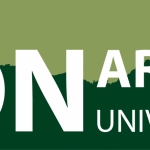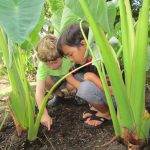knowing our ʻāina
Mānoa
An important part of striving to become a Native Hawaiian place of learning grounded in aloha ‘āina is knowing the ‘āina where we are located. When we know our ‘āina, we can appreciate her more, take better care of her, and learn more from her. Our office is committed to helping you learn more about Mānoa and we mahalo all those who contribute to this wealth of knowledge. Below are some resources for those who seek to learn more about Mānoa through an understanding of her physical space, her history, and her moʻolelo.
If you have a resource you would like to share please submit it to us using our NHPoL Additional Resources Form.
Also, if there is something you would like to learn, please let us know using our NHPoL Feedback Form. Mahalo!
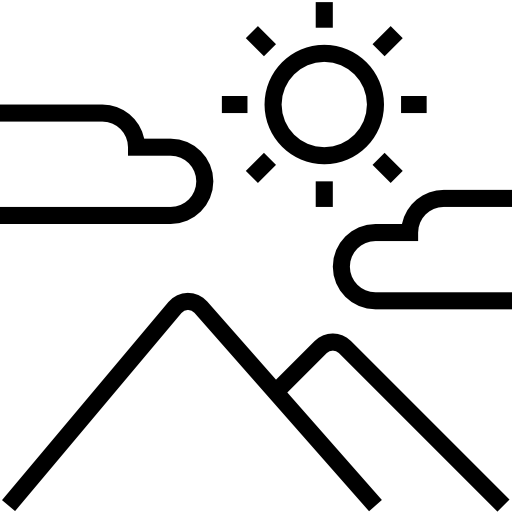
Hawaiian Geography
Situating Mānoa within O‘ahu and Hawai‘i.

The Re-Mapping Project
Exploring the multi-layered genealogy of our campus.

Mānoa's Moʻolelo
Learning mo‘olelo of our wahi kupuna, Mānoa.

Mānoa Organizations
Connecting with our Mānoa community.
Hawaiian Geography
Situating Mānoa within O‘ahu and Hawai‘i
From a Native Hawaiian perspective, mapping and place-based knowledge are important in knowing how to best mālama those places. We celebrate the chief Mā‘ilikūkahi who first introduced the ahupuaʻa system on the island of O‘ahu in the 15th century. Below is an explanation of this mapping system presented within the context of Mānoa, O‘ahu.
Pae ʻāina
Pae ʻāina refers to an archipelago and is a term used to describe the entire island chain of Hawaiʻi. The term pae ʻāina derives from the two terms pae and ‘āina. Mānoa is a valley within the pae ‘āina of Hawai‘i.
Mokupuni
Mokupuni refers to an island and is the term used to classify each individual island. The term mokupuni derives from the words moku and puni. Mānoa Valley sits in the mokupuni of O‘ahu. Although mostly known as O‘ahu today, this island has other names to represent its genealogy. For example, another name is Oʻahu-a-Lua in reference to the island’s father, Lua, in the creation story of Papa and Wākea. Affectionately, the island of O‘ahu is also called Oʻahu-a-Kākuhihewa or Ke-One-a-Kākuhihewa to honor Kākuhihewa, an Oʻahu Kingdom chief who led one of the most prosperous reigns in the history of Oʻahu.
Moku
Moku refers to a district or section and it is a term used to divide up each island. The island of Oʻahu has six moku including: Ko‘olaupoko, Ko‘olauloa, Waialua, Wai‘anae, ‘Ewa, and Kona. Mānoa valley sits in the moku of Kona. Kona refers to the leeward side, and is used to describe the leeward sides of all the islands.
Ahupuaʻa
Ahupuaʻa is one of the more widely understood traditional land classifications used today. According to Pukui and Elbert (1986), an ahupuaʻa is a “land division usually extending from the uplands to the sea, so-called because the boundary was marked by a heap (ahu) of stones surmounted by an image of a pig (puaʻa), or because a pig or other tribute was laid on the altar as tax to the chief” (p. 9).
On the mokupuni of O‘ahu, each moku is further divided into pie or crescent shape divisions that run from the mountain to the sea. The ahupuaʻa was the basis for Maʻilikūkahi’s resource organization plan because, from a Hawaiian point of view, it was an effective way to organize people, maintain political order and societal balance, and manage resources in each area. Mānoa Valley is in the ahupuaʻa of Waikīkī.
ʻIli ʻāina
ʻIli ʻāina are land divisions that fall within the ahupuaʻa. Also referred to as ʻili, these land divisions are not a feature found in every ahupuaʻa. But for bigger ahupuaʻa, an order was established through ʻili subdivision. The ahupuaʻa of Waikīkī has many ʻili, and specifically, our entire campus resides over at least a dozen. Some of the ʻili that span throughout our campus include: ʻAihualama and Haukulu in upper Mānoa Valley (Lyon Arboretum), Kānewai, Kauwalaʻa, Paʻakea, Pilipili, Puahia, and Wailele.
Ua & Makani
In addition to physical land divisions, each ua and makani also has a name. These names demonstrate the keen observational skills Kānaka/Native Hawaiians used to understand their environment. The naming of rains and winds also demonstrates the deep personal relationships that Native Hawaiians have with their surroundings. A rain and wind name could be given for several reasons. Some rains and winds are named for their physical features: how they act when they hit the land (sometimes they rattle leaves or shake houses), whether it is fine or rough, the fragrance they elicit from the plants or surrounding localities (shoreline, mountain peaks), and where and how it falls or blows. Some rain and wind names come from stories of deified people who, after their time in their human state, became the elemental features of their place.
According to Akana-Gooch, Gonzalez, and Zane (2015), there are six rains that fall around Mānoa Valley. Four are specific to Mānoa and two are related to the larger area that Mānoa sits in:
- Kuahine/Tuahine: A kilihune ua that is said to come from the Kailua side of the Koʻolau mountain range and through Mānoa Valley. Kuahine is the name of a chiefess who once lived in Mānoa and was the mother of Kahalaopuna.
- Kūkalahale: A rain that falls in Mānoa and is known as a passing rain that “blows under the eaves of the houses” (Akana-Gooch, Gonzalez, & Zane, 2015, p. 130). Kūkalahale is a rain that is specific to Mānoa and is also a general rain for Honolulu and the Waikīkī ahupuaʻa.
- Līheʻe lehua: A rain in Mānoa that falls on the lehua flowers.
- Luahine: A rain that starts at the eastern corner of Mānoa at the foothills of Pali Luahine and moves very slowly –like an old lady, as its name indicates– along the Woodlawn side of Mānoa. Luahine is also the name of a moʻo kupua, a deity, who resided in the foothills of Mānoa, an ‘āina which later came to be known because of her as Paliluahine.
- Wa‘ahila: A rain named for the nearby Wa‘ahila ridge that runs behind St. Louis Heights.
- Nāulu and Kiʻowao: Rains that are general to the Honolulu area.
- Uhiwai and Ki‘owao: The names of mists associated with Mānoa.
We know of less wind names in Mānoa.
Pae ʻāina
Pukui, M. K., & Elbert, S. H. (1986). Hawaiian dictionary: Hawaiian-English, English-Hawaiian (Rev. and enl. ed). University of Hawaiʻi Press.
Mokupuni
Fornander, A. (1980). An account of the Polynesian race: Its origins and migrations : and the ancient history of the Hawaiian people to the times of Kamehameha I. Tuttle.
Pukui, M. K., & Elbert, S. H. (1986). Hawaiian dictionary: Hawaiian-English, English-Hawaiian (Rev. and enl. ed). University of Hawaiʻi Press.
Moku
Pukui, M. K., & Elbert, S. H. (1986). Hawaiian dictionary: Hawaiian-English, English-Hawaiian (Rev. and enl. ed). University of Hawaiʻi Press.
Sterling, E. P., & Summers, C. C. (1993). Sites of Oahu (Repr). Bishop Museum Press.
Ahupuaʻa
Alexander, W. D. (1882). A brief history of land titles in the Hawaiian Kingdom. P.C. Advertiser Co. Steam Print.
Gonschor, L., & Beamer, K. (2014). Toward an Inventory of Ahupua’a in the Hawaiian Kingdom: A survey of Nineteenth and early Twentieth-Century Cartographic and Archival Records of the Island of Hawai’i. Hawaiian Journal of History, 48, 53–87. Academic Search Complete.
Pukui, M. K., & Elbert, S. H. (1986). Hawaiian dictionary: Hawaiian-English, English-Hawaiian (Rev. and enl. ed). University of Hawaiʻi Press.
Sterling, E. P., & Summers, C. C. (1993). Sites of Oahu (Repr). Bishop Museum Press.
ʻIli ʻāina
Alexander, W. D. (1882). A brief history of land titles in the Hawaiian Kingdom. P.C. Advertiser Co. Steam Print.
Kapāanaokalāokeola Oliveira, K.-A. R.-M. (2014). Ancestral places: Understanding Kanaka geographies. Oregon State University Press.
Malo, D. (1991). Hawaiian antiquities: Moʻolelo Hawaiʻi (N. B. Emerson, Trans.). Bernice P. Bishop Museum.
Ua & Makani
Akana-Gooch, C. L., Gonzalez, K., & Zane, S. (2015). Hānau ka ua: Hawaiian rain names. Kamehameha Publishing.
Alvarado, G. (2005). Index of Rains. University of Hawaiʻi Library. http://www2.hawaii.edu/~hawnpac/libguides_docs/indexofrains.pdf
Alvarado, G. (2005). Index of Winds. University of Hawaiʻi Library. http://www2.hawaii.edu/~hawnpac/libguides_docs/indexofwinds.pdf
Rose, K. L. (1980). Ka Makani: Mai ka puke wehewehe ʻōlelo ʻo Hawaiian dictionary, e Samuel Elbert a me Mary Kawena Pukui, Honolulu 1971, University of Hawaii Press. http://www2.hawaii.edu/~hawnpac/libguides_docs/kamakani.pdf
Rose, K. L. (1980). Ka Ua: Mai ka puke wehewehe ʻōlelo ʻo Hawaiian dictionary, e Samuel Elbert a me Mary Kawena Pukui, Honolulu 1971, University of Hawaii Press. http://www2.hawaii.edu/~hawnpac/libguides_docs/kaua.pdf
The Re-Mapping Project
Exploring the multi-layered genealogy of our campus
The Re-Mapping Project is a collaborative effort that explores the multi-layered genealogies and histories of our UH Mānoa campus. The following audio campus tours were developed to help our community better understand and appreciate the geography of this ʻāina, including its histories, people, and languages. In order from shortest to longest walking distance, the routes of the three self-guided tours are:
1) Campus Center and Kuykendall Hall;
2) Hawaiʻi Hall, Saunders Hall, Queen Liliʻuokalani Center for Student Services, and Varney Circle;
3) Webster Hall, down McCarthy Mall, and Hamilton Library.
Stay tuned for future versions of this project!
Our goal is to help our community better acknowledge and appreciate Hawaiian geography, history, and the people and language of this ʻāina, one step at a time. The materials below supplement the information that is provided in the in-person tours.
We want to mahalo:
- Dr. Christina Higgins and Kapuaokekoʻolauikaulupua Adams from the Multilingual Multicultural Initiative for initiating and leading this effort,
- Native Hawaiian Student Services for helping to lead the first tours in 2018 at the Pīko‘oko‘o Conference,
- Julius Paulo of the UH Mānoa Planning Department for his willingness to share his wealth of knowledge about mapping and our campus,
- Keahialaka Ioane, a former graduate research assistant with our office who supported various parts of this project,
- Avis Poai, a former faculty specialist with our office who led the creation of our story map,
- and Dr. Punihei Anthony, Dr. Kawehi Goto, Nick Childs, and hope matsumoto, for sharing their leo for the audio campus tours iteration of this project.
First, what is a story map? A story map is an online interactive map that provides supporting information and context. It integrates layered maps, legends, text, photos, and video that helps users explore this content. Users are free to explore content in a nonlinear manner using the story map.
Our story maps use the ʻili ʻāina of Mānoa Valley as a foundation for understanding where UH Mānoa is placed historically, geographically, linguistically, and culturally. For this reason, maps and historical research have been combined to provide a rich interactive story map to facilitate learning about our campus.
In 2018 when our campus tours were first offered (in both ʻōlelo Hawaiʻi and English), we provided tour groups with paper brochures. However, to facilitate online access and reduce waste, we are working on two types of story maps: (1) a mobile-friendly version that permits users to have access to important information conveyed during the campus tour; and (2) a rich story-telling version that provides lengthier coverage of our campus tour. We are also currently working on an ADA-friendly tour app that provides a narrated walking experience for sight-impaired individuals.
Coming Soon
This pilot project entitled, “Remapping the University of Hawaiʻi at Mānoa,” will contain an interactive map that allows users to learn the names of various buildings, locations, features, and ʻili ʻāina. A brief narrative description will accompany various “stops” along the huakaʻi.
Nā Moʻolelo o Mānoa
The deeply rooted mo‘olelo of Mānoa help us to learn about the potential of the ‘āina and how to best mālama her. If you have a mo‘olelo of Mānoa that you would like to share, please submit them here using our resources form.
A special mahalo to Jenny Estrella for the artwork below.
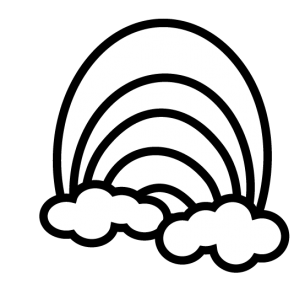
The story of Kahalaopuna is the story of a family who lived in Mānoa Valley. On the surface, this is a love story of jealousy, betrayal, and consequences. However, for the natives of Mānoa, it is also an important story laden with genealogical and ecological consciousness. Kahalaopuna was a nīʻaupiʻo princess whose status betrothed her to Kauhi, prince of the neighboring ahupuaʻa of Kailua. However, rumors of Kahalaopuna’s beauty would cause turmoil between her and Kauhi, and the majority of the story focuses on events between her, Kauhi, and her ʻaumakua. In the end, Kauhi dies for his transgressions towards her and returns to his guardian form as the shark of Waikīkī. Kahalaopuna and her family return to Mānoa in their guardian forms as well: Kahalaopuna as the beautiful ānuenue that continues to grace Mānoa Valley; her grandparents, Akaaka and Nalehuaoakaaka as the neighboring ridges; her mother Kuahine (Tuahine) as the rain of Mānoa; and her father Haukani as Mānoa’s wind.

The moʻolelo of the travels of Kāne and Kanaloa are known throughout the pae ʻāina of Hawaiʻi. Theirs is the story of seeking and finding freshwater. The story goes that the godly duo came to Hawaiʻi from their sacred homeland in the clouds, Kuaihelani, in search of good ʻawa. Freshwater is necessary to make the famous ʻawa drink. Whenever Kanaloa desired ʻawa he asked Kāne to find freshwater by sensing the water underground and using his ‘ō‘ō to pierce the earth and allow the water to come forth. There are numerous wahi pana around the archipelago named for their visit, and for the freshwater springs they left behind. In Mānoa those locations include but are not limited to: Kānewai (Ka Papa Loʻi o Kānewai), Punahou (the area around Punahou School and Mōʻiliʻili) and Waiakeakua (in upper Mānoa Valley).
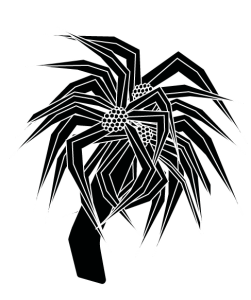
The story of Ka Punahou is the story about the area that we call Punahou today. Punahou means new spring, and therefore the story is how the land in the area became furnished with this spring. The story of the spring comes in two successive stories. The first is the story of two twins, who, while on the run from their makuahine, created a pūnāwai in the area for their comfort and survival. According to moʻolelo, sometime after the pair created the pūnāwai, the land had experienced a drought. The second mo‘olelo tells of an elderly couple living in the area who received guidance from an elderly man in their dreams about certain rituals to perform to find water in the area. The water would be under a hala tree, he told them. When the couple (surrounded by others in that area) was finally able to lift the tree, the water came bubbling up from below the land. It was then that the crowd exclaimed, “Ka Punahou! Ka Punahou!” or “The new spring! The new spring!” The area has retained this name from then on.
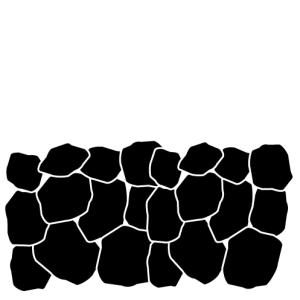
Kūkaʻōʻō is believed to be one of the oldest heiau in the pae ʻāina. Kūkaʻōʻō Heiau is listed on the National Register of Historic Places (TMK 2-98-19:35) and sits on the Cooke Family Estate. It has now become the kuleana of Mānoa Heritage Center, and you can visit their site for more information and tours: https://www.manoaheritagecenter.org.
One version of historical research on the area focuses on the story that the heiau was most likely built by menehune who lost the heiau to Kūaliʻi, an industrious 17th-century chief, who used the heiau to head his 6-temple system in Mānoa Valley. Other research on this area focuses on the name, Kūkaʻōʻō, focusing on the ‘ō‘ō stick and its relevance to agriculture. Relatedly, there is also a focus on Kū and the heiau’s relevance to all things related to Kū.
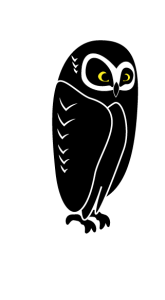
Puʻu Pueo is a wahi pana of Mānoa Valley because it is the hill where the ʻaumakua of Kahalaopuna resides. The earlier synopsis on the story of Kahalaopuna revealed that she had an ʻaumakua. This ʻaumakua came in the form of a large pueo who resided on the puʻu to the right of the road heading up Mānoa Valley. Puʻu Pueo is also mentioned in the story of Kapoʻi, a faithful owl worshipper who was saved by the wrath of the chief Kākuhihewa (Famous Oʻahu Kingdom chief). When Kapoʻi’s ʻaumakua pueo wanted to save him from sacrifice, he sought out the king of owls who lived on a hill in upper Mānoa Valley. From his home, the owl king called all the owls from across the pae ʻāina to come to Kapoʻi’s aid.
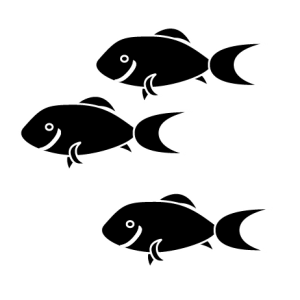
In an interview on place names with historian Theodore Kelsey, Annie Kamakakaulani Woolsey Harris, one of the last known mānaleo of Mānoa Valley, tells a story of iʻa that swam upstream from the sea of Waikīkī to the streams and ponds at the top of Mānoa Valley. She revealed that there was a fish-seer rock in the area of Kūkālia and that the seers would stand on this rock to observe the iʻa moving up the Valley in a series of waves from the ocean. From Waikīkī the fish entered into ʻĀpuakēhau Stream and with each succeeding wave moved up to Mōʻiliʻili, Puahia, Makāwiliwili, Kāʻumeke, Nāniuʻapo/Naniuapō, and ending at Waʻaloa where they would break up into the many tributaries of Mānoa.
Puʻu ʻUalakaʻa, as its name describes, is literally the story of rolling ʻuala. Most versions of this story are concerned with two mahi ʻai ʻuala, Kupihe and Kapanaia. Kupihe planted his ʻuala patch on the mountain hill-side. Kapanaia planted his on the flat ground. They were in constant quarrels when only one ʻuala spouted because they were confused on whose patch it came from as it rolled back and forth each day. The moʻolelo also tells us that the hill should actually be named ʻIolekaʻa, because it was a rat who chewed on the vine of the ʻuala in Kupihe’s patch, which caused it to roll over to Kapanaia’s, where it stayed and sprouted new roots. This is why we see new roots sprouting from ‘uala today. Another version tells that Kaʻuhelemoa/Ka‘auhelemoa, a famed chicken of Pālolo Valley, chewed on the vine which caused the ‘uala to roll into Kapanaia’s patch. Historically, the moʻolelo of ʻUalakaʻa is credited to Kamehameha and his renowned leadership. The chief had that whole side of the Mānoa mountain range planted with ʻuala. Harvesting these ʻuala had to do with cutting them at the top and having them roll down for the people to gather at the bottom. This work fashioned him with the reputation of the “people’s chief” because he often worked these fields with the makaʻāinana and hence he was highly respected by his subjects.
Kahalaopuna
Buda. (1904). Mookaao Hawaii no Kahalaopuna, o ke awawa o ke anuenue, alana a hoolaaia imua o ka lahui Hawaii. Paiia ma ka Paredaiso o ka Pakipika.
E. M. B. (1883, December 8). Kahalaopuna: A legend of Manoa valley. Saturday Press. [Volume] (Honolulu, H.I.) 1880-1885, December 08, 1883, Image 4, 1883/12/08. Library of Congress. https://chroniclingamerica.loc.gov/lccn/sn82014681/1883-12-08/ed-1/seq-4/
Nā Huakaʻi a Kāne a me Kanaloa
Kelsey, T. (1891-1987). Mānoa Place Names. Hawaii State Archives: Theodore Kelsey Collection: M86-19: 499- Mānoa Valley Accessed May 09, 2018.
Ka Punahou
Nakuina, E. M. B. (1893). The Punahou spring: A legend. Thos. G. Thrum. https://evols.library.manoa.hawaii.edu/bitstream/10524/663/Thrums-1893.pdf
Thrum, T. G. (Ed.). (1907). Hawaiian Folk Tales: A Collection of Native Legends. A. C. McClurg & Co. https://www.gutenberg.org/files/18450/18450-h/18450-h.htm
Unknown. (1915). Kahi i Loaa mai ai ka inoa Ka-Punahou. HEN: Newspapers Kuokoa, Nov. 26, 1915. Bishop Museum Archives.
Ka Heiau ʻo Kūkaʻōʻō
Cleghorn, P., & Anderson, L. (1992). Archaeological Inventory Survey in Manoa Valley, Oahu
TMK 2-98-19:35, and Preservation Plan for Kukaoo Heiau. Paul Cleghorn Consulting.
Sterling, E. P., & Summers, C. C. (1993). Sites of Oahu (Repr). Bishop Museum Press.
Tomonari-Tuggle, M. J. F. (1998). Kukaoo Heiau: A Glimpse at Manoa’s Past Historical Research and an Interpretive Master Plan (Hawaii State Historic Preservation Division, HI).
Westervelt, W. D. (1963). Hawaiian legends of old Honolulu. Library of Alexandria.
Puʻu Pueo
E. M. B. (1883, December 8). Kahalaopuna: A legend of Manoa valley. Saturday Press. [Volume] (Honolulu, H.I.) 1880-1885, December 08, 1883, Image 4, 1883/12/08. Library of Congress. https://chroniclingamerica.loc.gov/lccn/sn82014681/1883-12-08/ed-1/seq-4/
Sterling, E. P., & Summers, C. C. (1993). Sites of Oahu (Repr). Bishop Museum Press.
Westervelt, W. D. (1963). Hawaiian legends of old Honolulu. Library of Alexandria.
Nā Iʻa Piʻi Kahawai o Mānoa
Kelsey, T. (1891-1987). “Mānoa Place Names” Hawaii State Archives: Theodore Kelsey Collection: M86-19: 499- Mānoa Valley Accessed May 09, 2018.
Puʻu ʻUalakaʻa
Fornander, A. (1916). Fornander collection of Hawaiian antiquities and folklore: The Hawaiians’ account of the formation of their islands and origin of their race, with the traditions of their migrations, etc., as gathered from original sources (T. G. Thrum, Ed.). Bishop Museum Press.
Mossman, G. P. (1934). Skill of Archer Gives Punahou Knoll its Name. Honolulu Star-Bulletin.
Mānoa Organizations
Connecting with our Mānoa community
As part of our a‘o pathway, we want to connect you with entities throughout Mānoa that can help you build your relationship with the ‘āina that surrounds our campus. If you have an organization to add to this list please feel free to share it with us using the NHPoL Additional Resources Form. Mahalo!








